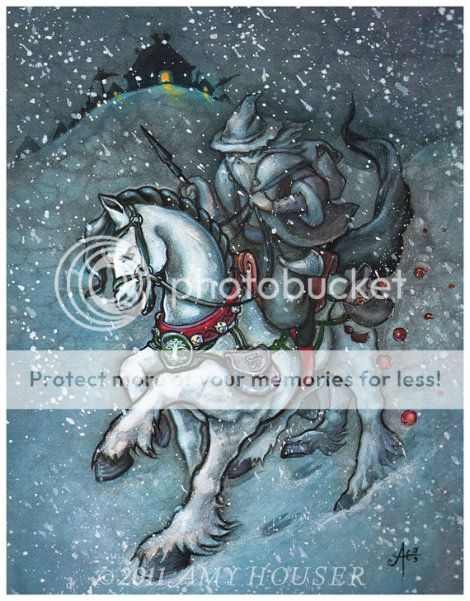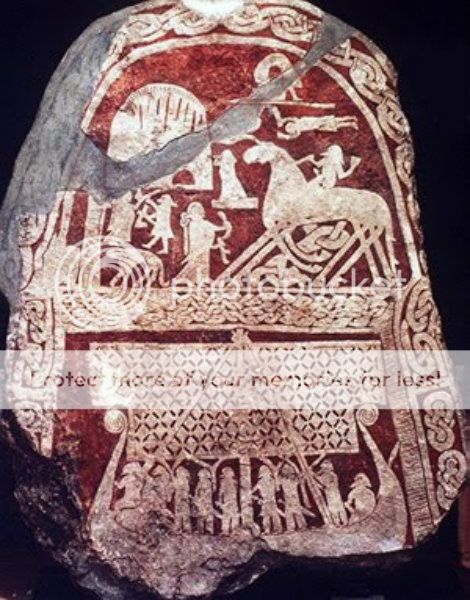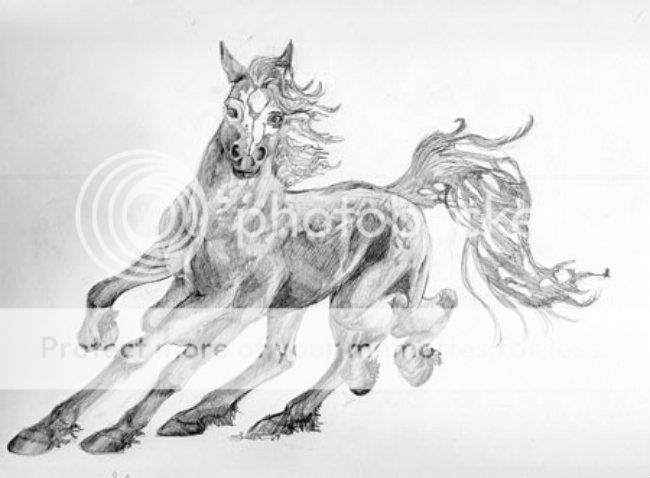-
*Astrella.
User deleted
Sleipnir, the eight-legged horse

Sleipnir is an important figure in Norse mythology. This eight-legged horse was legendary for his strength, courage and speed. Odin himself declared Sleipnir "the world's best horse."
Sleipnir's mother was Loki, and his sire was Svadilfari, the remarkable stallion who helped build the walls of Asgard.
As the legend goes, an unnamed builder offered to build a fortification for the gods which would keep out any enemy, in exchange for the sun, the moon, and the goddess Freyja.
The gods agreed, on the condition that the builder work alone, and that he finish within three seasons.
The builder asked to be allowed to use his stallion, Svadilfari.
The gods, not realizing Svadilfari's epic strength and stamina, agreed. As the builder worked, Svadilfari moved giant boulders and performed astonishing feats of strength.
The gods watched, dismayed, as the builder grew closer to completing his project by the stated deadline.
Deciding that Loki was to blame for this debacle, and unwilling to give up the sun, the moon, and the goddess Freyja in payment, the gods sent Loki to disrupt the project.
Loki took the form of a mare in heat, and lured Svadilfari away from the building project. Having successfully ensured that the project would not be finished in time, Loki found himself with foal.
Loki soon gave birth to a gray foal with eight legs. In most cases, Sleipnir is depicted as a horse with each leg doubled. Sleipnir is one of Odin's favorite mounts, and can jump vast distances, and even occasionally fly.
Sleipnir was certainly a key figure in many stories of Norse mythology, many of which have been lost to time.
His name was familiar enough to be the Norse equivalent of a household word, and several ships were dubbed "sea-Sleipnir." Sleipnir had the ability to bear his rider to the underworld (Hel), and this coupled with his power of flight has led many ethnographers to link him to the shamanic tradition.
Hilda Ellis Davidson, one of the world's foremost scholars on Norse mythology, suggests that the most "fruitful resemblance" is between Sleipnir and the old Norse funeral rite for the dead.
The body would be placed upon a bier, and four men would carry the bier to the body's final resting place (usually either a cairn or a funeral pyre). In this sense, the dead man could be said to be carried to the underworld by a "steed with eight legs," meaning the four pallbearers.
To this day, "Sleipnir" remains a popular name for ships in Northern England.
Source: http://weirdanimalreport.com/article/sleip...ht-legged-horse
Edited by giulhia - 26/12/2017, 12:38.
Sleipnir, the eight-legged horse1 Luglio 2014 |


